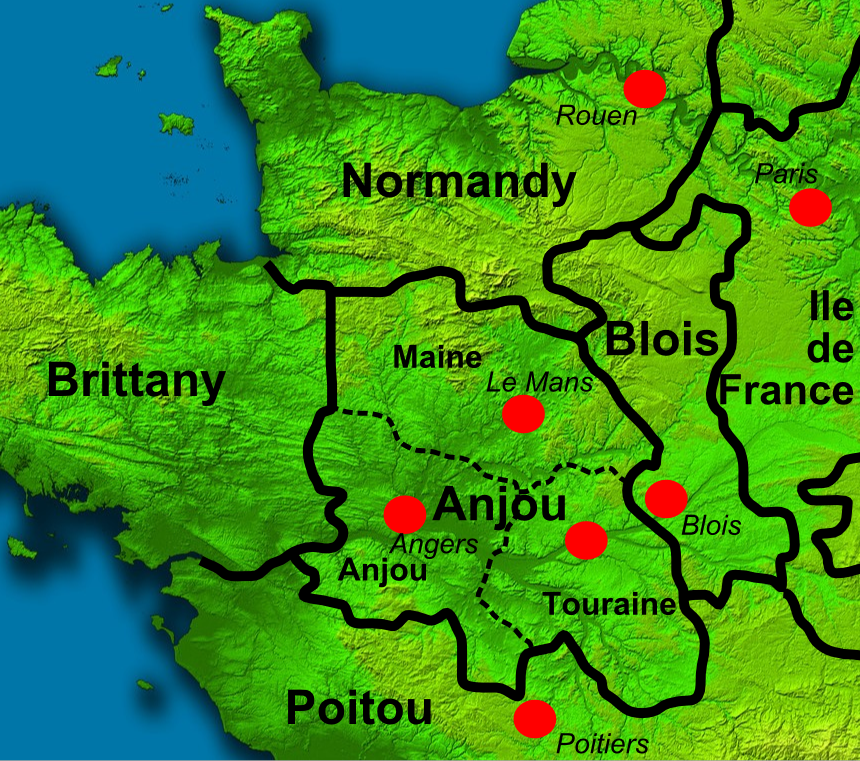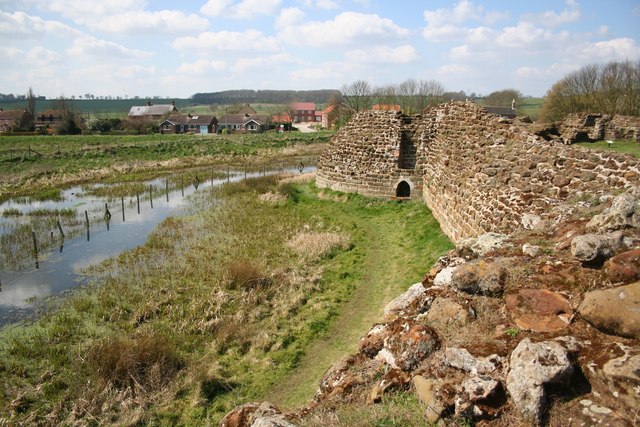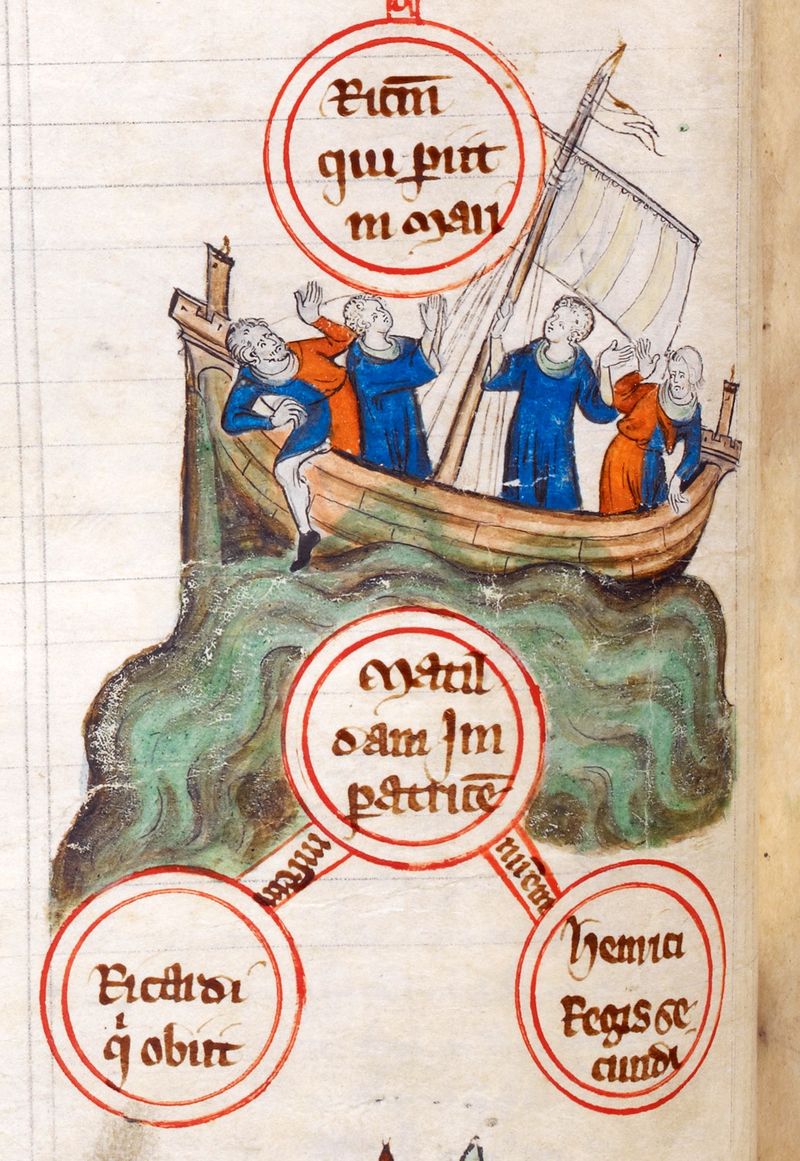|
William De Roumare, Earl Of Lincoln
William de Romare (born c. 1096) (also Roumare or Romayre or Romay) was the Earl of Lincoln Earl of Lincoln is a title that has been created eight times in the peerage of England, most recently in 1572. The Hereditary peerage, earldom was held as a subsidiary title by the Duke of Newcastle, Dukes of Newcastle-under-Lyne, from 1768 to 1 ..., 2nd Baron of Kendal, Lord of Bolingbroke. He was the son of Roger FitzGerold (de Roumare), 1st Baron of Kendal, Lord of Bolingbroke and Lucy of Bolingbroke, widow of Ivo de Taillebois. He followed his father as Lord of Bolingbroke, Lincolnshire. He was half-brother to Ranulf of Chester, through their mother, Lucy. In Normandy, he was Seigneur (Lord) of Roumare. In 1120 William was supposed to have crossed the Channel with William the Aetheling in the White Ship but disembarked shortly before it sailed, avoiding drowning in the subsequent sinking of the ship. He was created Earl of Lincoln by King Stephen after 1143. The Earl liv ... [...More Info...] [...Related Items...] OR: [Wikipedia] [Google] [Baidu] |
Earl Of Lincoln
Earl of Lincoln is a title that has been created eight times in the peerage of England, most recently in 1572. The Hereditary peerage, earldom was held as a subsidiary title by the Duke of Newcastle, Dukes of Newcastle-under-Lyne, from 1768 to 1988, until the dukedom became extinct. Earls of Lincoln, first creation (1141) *William d'Aubigny, 1st Earl of Arundel, William d'Aubigny, 1st Earl of Lincoln and 1st Earl of Arundel ( 1109–1176) The Earldom was created for the first time probably around 1141 as William d'Aubigny, 1st Earl of Arundel, is mentioned as Earl of Lincoln in 1143 in two charters for the Abbey of Affligem, representing his wife Adeliza of Louvain, former wife of Henry I of England, King Henry I. Earls of Lincoln, second creation (after 1143) *William de Roumare, Earl of Lincoln (1096–1155) (reverted to the Crown) The Earldom was created for the second time by Stephen of England, King Stephen sometime after 1143 for William de Roumare, Earl of Lincoln, Will ... [...More Info...] [...Related Items...] OR: [Wikipedia] [Google] [Baidu] |
Neuf-Marché
Neuf-Marché is a commune in the Seine-Maritime department in the Normandy region in north-western France. Geography A forestry and farming village situated by the banks of the river Epte in the Pays de Bray, some east of Rouen at the junction of the D 915 with the D 1 and D 19 roads. This commune is the furthest southeast within the department and borders both the Eure and Oise departments. Population Places of interest * The church of St. Pierre, dating from the tenth century. * Traces of a feudal castle. * Two eighteenth-century presbyteries. * A sixteenth-century manorhouse. * The nineteenth-century château of Vardes. * A monument in the forest of Lyons by Robert Delandre. People * Béatrix Beck, author. * Robert Delandre, sculptor. * Bernard de Neufmarché, Norman lord active in the conquest of Wales 1088–1095. See also *Communes of the Seine-Maritime department The following is a list of the 707 communes of the French department of Seine-Maritime. The c ... [...More Info...] [...Related Items...] OR: [Wikipedia] [Google] [Baidu] |
12th-century English Nobility
1 (one, unit, unity) is a number, numeral, and glyph. It is the first and smallest positive integer of the infinite sequence of natural numbers. This fundamental property has led to its unique uses in other fields, ranging from science to sports, where it commonly denotes the first, leading, or top thing in a group. 1 is the unit of counting or measurement, a determiner for singular nouns, and a gender-neutral pronoun. Historically, the representation of 1 evolved from ancient Sumerian and Babylonian symbols to the modern Arabic numeral. In mathematics, 1 is the multiplicative identity, meaning that any number multiplied by 1 equals the same number. 1 is by convention not considered a prime number. In digital technology, 1 represents the "on" state in binary code, the foundation of computing. Philosophically, 1 symbolizes the ultimate reality or source of existence in various traditions. In mathematics The number 1 is the first natural number after 0. Each natural number, ... [...More Info...] [...Related Items...] OR: [Wikipedia] [Google] [Baidu] |
11th-century English Nobility
The 11th century is the period from 1001 (represented by the Roman numerals MI) through 1100 (MC) in accordance with the Julian calendar, and the 1st century of the 2nd millennium. In the history of Europe, this period is considered the early part of the High Middle Ages. There was, after a brief ascendancy, a sudden decline of Byzantine power and a rise of Norman domination over much of Europe, along with the prominent role in Europe of notably influential popes. Christendom experienced a formal schism in this century which had been developing over previous centuries between the Latin West and Byzantine East, causing a split in its two largest denominations to this day: Roman Catholicism and Eastern Orthodoxy. In Song dynasty China and the classical Islamic world, this century marked the high point for both classical Chinese civilization, science and technology, and classical Islamic science, philosophy, technology and literature. Rival political factions at the Song dynast ... [...More Info...] [...Related Items...] OR: [Wikipedia] [Google] [Baidu] |
1090s Births
1 (one, unit, unity) is a number, numeral, and glyph. It is the first and smallest positive integer of the infinite sequence of natural numbers. This fundamental property has led to its unique uses in other fields, ranging from science to sports, where it commonly denotes the first, leading, or top thing in a group. 1 is the unit of counting or measurement, a determiner for singular nouns, and a gender-neutral pronoun. Historically, the representation of 1 evolved from ancient Sumerian and Babylonian symbols to the modern Arabic numeral. In mathematics, 1 is the multiplicative identity, meaning that any number multiplied by 1 equals the same number. 1 is by convention not considered a prime number. In digital technology, 1 represents the "on" state in binary code, the foundation of computing. Philosophically, 1 symbolizes the ultimate reality or source of existence in various traditions. In mathematics The number 1 is the first natural number after 0. Each natural numb ... [...More Info...] [...Related Items...] OR: [Wikipedia] [Google] [Baidu] |
Earls Of Lincoln
Earl of Lincoln is a title that has been created eight times in the peerage of England, most recently in 1572. The earldom was held as a subsidiary title by the Dukes of Newcastle-under-Lyne, from 1768 to 1988, until the dukedom became extinct. Earls of Lincoln, first creation (1141) * William d'Aubigny, 1st Earl of Lincoln and 1st Earl of Arundel ( 1109–1176) The Earldom was created for the first time probably around 1141 as William d'Aubigny, 1st Earl of Arundel, is mentioned as Earl of Lincoln in 1143 in two charters for the Abbey of Affligem, representing his wife Adeliza of Louvain, former wife of King Henry I. Earls of Lincoln, second creation (after 1143) *William de Roumare, Earl of Lincoln (1096–1155) (reverted to the Crown) The Earldom was created for the second time by King Stephen sometime after 1143 for William de Roumare. However, in 1149 or 1150, as William had gone over to the side of Empress Matilda, King Stephen took the earldom from him and elevate ... [...More Info...] [...Related Items...] OR: [Wikipedia] [Google] [Baidu] |
Baldwin De Redvers, 1st Earl Of Devon
Baldwin de Redvers, 1st Earl of Devon (died 4 June 1155), feudal baron of Plympton in Devon, was the son of Richard de Redvers and his wife Adeline Peverel. He was one of the first to rebel against King Stephen, and was the only first rank magnate never to accept the new king. He seized Exeter, and was a pirate out of Carisbrooke, but he was driven out of England to Anjou, where he joined the Empress Matilda. She made him Earl of Devon after she established herself in England, probably in early 1141. He founded several monasteries, notably those of Quarr Abbey (1131), in the Isle of Wight, a priory at Breamore, Hampshire, and the Priory of St James, at Exeter. Some monastic chronicles call his father also Earl of Devon, but no contemporary record uses the title, including the monastic charters. Family and children He married Adelize de Baalun (d. ).Bearman, R. (1994).''Charters of The Redvers Family and the Earldom of Devon 1090–1217''. p. 9. They had children: # ... [...More Info...] [...Related Items...] OR: [Wikipedia] [Google] [Baidu] |
Hugh De Gournay
Hugh is the English-language variant of the masculine given name , itself the Old French variant of '' Hugo (name)">Hugo'', a short form of Continental Germanic Germanic name">given names beginning in the element "mind, spirit" (Old English ). The Germanic name is on record beginning in the 8th century, in variants ''Chugo, Hugo, Huc, Ucho, Ugu, Uogo, Ogo, Ougo,'' etc. The name's popularity in the Middle Ages ultimately derives from its use by Frankish nobility, beginning with Duke of the Franks and Count of Paris Hugh the Great (898–956). The Old French form was adopted into English from the Norman period (e.g. Hugh of Montgomery, 2nd Earl of Shrewsbury d. 1098; Hugh d'Avranches, 1st Earl of Chester, d. 1101). The spelling ''Hugh'' in English is from the Picard variant spelling '' Hughes'', where the orthography ''-gh-'' takes the role of ''-gu-'' in standard French, i.e. to express the phoneme /g/ as opposed to the affricate /ʒ/ taken by the grapheme ''g'' before front ... [...More Info...] [...Related Items...] OR: [Wikipedia] [Google] [Baidu] |
Stephen Of England
Stephen (1092 or 1096 – 25 October 1154), often referred to as Stephen of Blois, was King of England from 22 December 1135 to his death in 1154. He was Count of Boulogne '' jure uxoris'' from 1125 until 1147 and Duke of Normandy from 1135 until 1144. His reign was marked by the Anarchy, a civil war with his cousin and rival, the Empress Matilda, whose son, Henry II, succeeded Stephen as the first of the Angevin kings of England. Stephen was born in the County of Blois in central France as the fourth son of Stephen-Henry, Count of Blois, and Adela, daughter of William the Conqueror. His father died as a crusader while Stephen was still young, and he was brought up by his mother. Placed into the court of his uncle Henry I of England, Stephen rose in prominence and was granted extensive lands. He married Matilda of Boulogne, inheriting additional estates in Kent and Boulogne that made the couple one of the wealthiest in England. Stephen narrowly escaped drowning w ... [...More Info...] [...Related Items...] OR: [Wikipedia] [Google] [Baidu] |
Bolingbroke, Lincolnshire
Bolingbroke, now called Old Bolingbroke, is a village and civil parish in the East Lindsey district of Lincolnshire, England. Its present boundaries were formed by the amalgamation of the Parishes of Bolingbroke and Hareby in 1739. The population at the 2011 census was 325. Bolingbroke is west of Spilsby. The village of New Bolingbroke is to the south-west. The Prime Meridian passes through the parish to the west of Old Bolingbroke. History Bolingbroke appears in the Domesday Book of 1086 as "Bolingborc", one of 38 places associated with Stori of Bolingbroke at the time of the Norman conquest. This suggests an Anglo-Saxon etymological origin, possibly "Bolingburh" or similar (burh of Bolla's people). William de Roumare, Earl of Lincoln (born ), may have built Bolingbroke Castle in the 12th century as a motte and bailey castle with wet ditch to replace an earlier earthwork defence structure which overlooked the village on Dewy Hill. In the early 13th century, a new castl ... [...More Info...] [...Related Items...] OR: [Wikipedia] [Google] [Baidu] |
William The Aetheling
William Ætheling (, ; 5 August 1103 – 25 November 1120), commonly called Adelin (sometimes ''Adelinus'', ''Adelingus'', ''A(u)delin'' or other Latinised Norman-French variants of ''Ætheling''), was the son of Henry I of England by his wife Matilda of Scotland, and was thus heir apparent to the English throne. His early death without issue caused a succession crisis, now known in English history as the Anarchy. Early life William was born in Winchester. His father, King Henry I of England, had married his mother, Matilda of Scotland, to conciliate his English subjects. Matilda was descended from Edmund Ironside and was a great-niece of Edward the Confessor; as such, the marriage represented a union between the new Norman rulers of England and the old Anglo-Saxon dynasty. Henry's hopes for his succession rested upon William, who was, according to Henry of Huntingdon, "a prince so pampered" that he seemed "destined to be food for the fire." Duke of Normandy During Henry I's ... [...More Info...] [...Related Items...] OR: [Wikipedia] [Google] [Baidu] |
Roumare
Roumare () is a commune in the Seine-Maritime department in the Normandy region in northern France. Geography A village of forestry and farming situated in the pays de Caux, just northeast of Rouen at the junction of the D47, D90 and the D67 roads. The junction of the A150 autoroute with the A151 lies entirely within the commune's territory. Population Places of interest * The church of Notre-Dame, dating from the fifteenth century. * The sixteenth-century château and its chapel. See also *Communes of the Seine-Maritime department The following is a list of the 707 communes of the French department of Seine-Maritime. The communes cooperate in the following intercommunalities (as of 2025): References Communes of Seine-Maritime {{Rouen-geo-stub ...[...More Info...] [...Related Items...] OR: [Wikipedia] [Google] [Baidu] |




